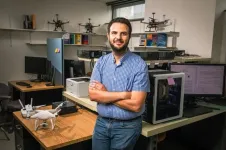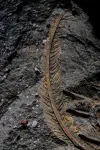It is a deep question, from deep in our history: When did human language as we know it emerge? A new survey of genomic evidence suggests our unique language capacity was present at least 135,000 years ago. Subsequently, language might have entered social use 100,000 years ago.
Our species, Homo sapiens, is about 230,000 years old. Estimates of when language originated vary widely, based on different forms of evidence, from fossils to cultural artifacts. The authors of the new analysis took a different approach. They reasoned that since all human languages likely have a common origin — as the researchers strongly think — the key question is how far back in time regional groups began spreading around the world.
“The logic is very simple,” says Shigeru Miyagawa, an MIT professor and co-author of a new paper summarizing the results. “Every population branching across the globe has human language, and all languages are related.” Based on what the genomics data indicate about the geographic divergence of early human populations, he adds, “I think we can say with a fair amount of certainty that the first split occurred about 135,000 years ago, so human language capacity must have been present by then, or before.”
The paper, “Linguistic capacity was present in the Homo sapiens population 135 thousand years ago,” appears in Frontiers in Psychology. The co-authors are Miyagawa, who is a professor emeritus of linguistics and the Kochi-Manjiro Professor of Japanese Language and Culture at MIT; Rob DeSalle, a principal investigator at the American Museum of Natural History’s Institute for Comparative Genomics; Vitor Augusto Nóbrega, a faculty member in linguistics at the University of São Paolo; Remo Nitschke, of the University of Zurich, who worked on the project while at the University of Arizona linguistics department; Mercedes Okumura of the Department of Genetics and Evolutionary Biology at the University of São Paulo; and Ian Tattersall, curator emeritus of human origins at the American Museum of Natural History.
The new paper examines 15 genetic studies of different varieties, published over the past 18 years: Three used data about the inherited Y chromosome, three examined mitochondrial DNA, and nine were whole-genome studies.
All told, the data from these studies suggest an initial regional branching of humans about 135,000 years ago. That is, after the emergence of Homo sapiens, groups of people subsequently moved apart geographically, and some resulting genetic variations have developed, over time, among the different regional subpopulations. The amount of genetic variation shown in the studies allows researchers to estimate the point in time at which Homo sapiens was still one regionally undivided group.
Miyagawa says the studies collectively provide increasingly converging evidence about when these geographic splits started taking place. The first survey of this type was performed by other scholars in 2017, but they had fewer existing genetic studies to draw upon. Now, there are much more published data available, which when considered together point to 135,000 years ago as the likely time of the first split.
The new meta-analysis was possible because “quantity-wise we have more studies, and quality-wise, it’s a narrower window [of time],” says Miyagawa, who also holds an appointment at the University of São Paolo.
Like many linguists, Miyagawa believes all human languages are demonstrably related to each other, something he has examined in his own work. For instance, in his 2010 book, “Why Agree? Why Move?” he analyzed previously unexplored similarities between English, Japanese, and some of the Bantu languages. There are more than 7,000 identified human languages around the globe.
Some scholars have proposed that language capacity dates back a couple of million years, based on the physiological characteristics of other primates. But to Miyagawa, the question is not when primates could utter certain sounds; it is when humans had the cognitive ability to develop language as we know it, combining vocabulary and grammar into a system generating an infinite amount of rules-based expression.
“Human language is qualitatively different because there are two things, words and syntax, working together to create this very complex system,” Miyagawa says. “No other animal has a parallel structure in their communication system. And that gives us the ability to generate very sophisticated thoughts and to communicate them to others.”
This conception of human language origins also holds that humans had the cognitive capacity for language for some period of time before we constructed our first languages.
“Language is both a cognitive system and a communication system,” Miyagawa says. “My guess is prior to 135,000 years ago, it did start out as a private cognitive system, but relatively quickly that turned into a communications system.”
So, how can we know when distinctively human language was first used? The archaeological record is invaluable in this regard. Roughly 100,000 years ago, the evidence shows, there was a widespread appearance of symbolic activity, from meaningful markings on objects to the use of fire to produce ochre, a decorative red color.
Like our complex, highly generative language, these symbolic activities are engaged in by people, and no other creatures. As the paper notes, “behaviors compatible with language and the consistent exercise of symbolic thinking are detectable only in the archaeological record of H. sapiens.”
Among the co-authors, Tattersall has most prominently propounded the view that language served as a kind of ignition for symbolic thinking and other organized activities.
“Language was the trigger for modern human behavior,” Miyagawa says. “Somehow it stimulated human thinking and helped create these kinds of behaviors. If we are right, people were learning from each other [due to language] and encouraging innovations of the types we saw 100,000 years ago.”
To be sure, as the authors acknowledge in the paper, other scholars believe there was a more incremental and broad-based development of new activities around 100,000 years ago, involving materials, tools, and social coordination, with language playing a role in this, but not necessarily being the central force.
For his part, Miyagawa recognizes that there is considerable room for further progress in this area of research, but thinks efforts like the current paper are at least steps toward filling out a more detailed picture of language’s emergence.
“Our approach is very empirically based, grounded in the latest genetic understanding of early homo sapiens,” Miyagawa says. “I think we are on a good research arc, and I hope this will encourage people to look more at human language and evolution.”
This research was, in part, supported by the São Paolo Excellence Chair awarded to Miyagawa by the São Paolo Research Foundation.
###
Written by Peter Dizikes, MIT News
Paper: “Linguistic capacity was present in the Homo sapiens population 135 thousand years ago”
https://www.frontiersin.org/journals/psychology/articles/10.3389/fpsyg.2025.1503900/full
END




